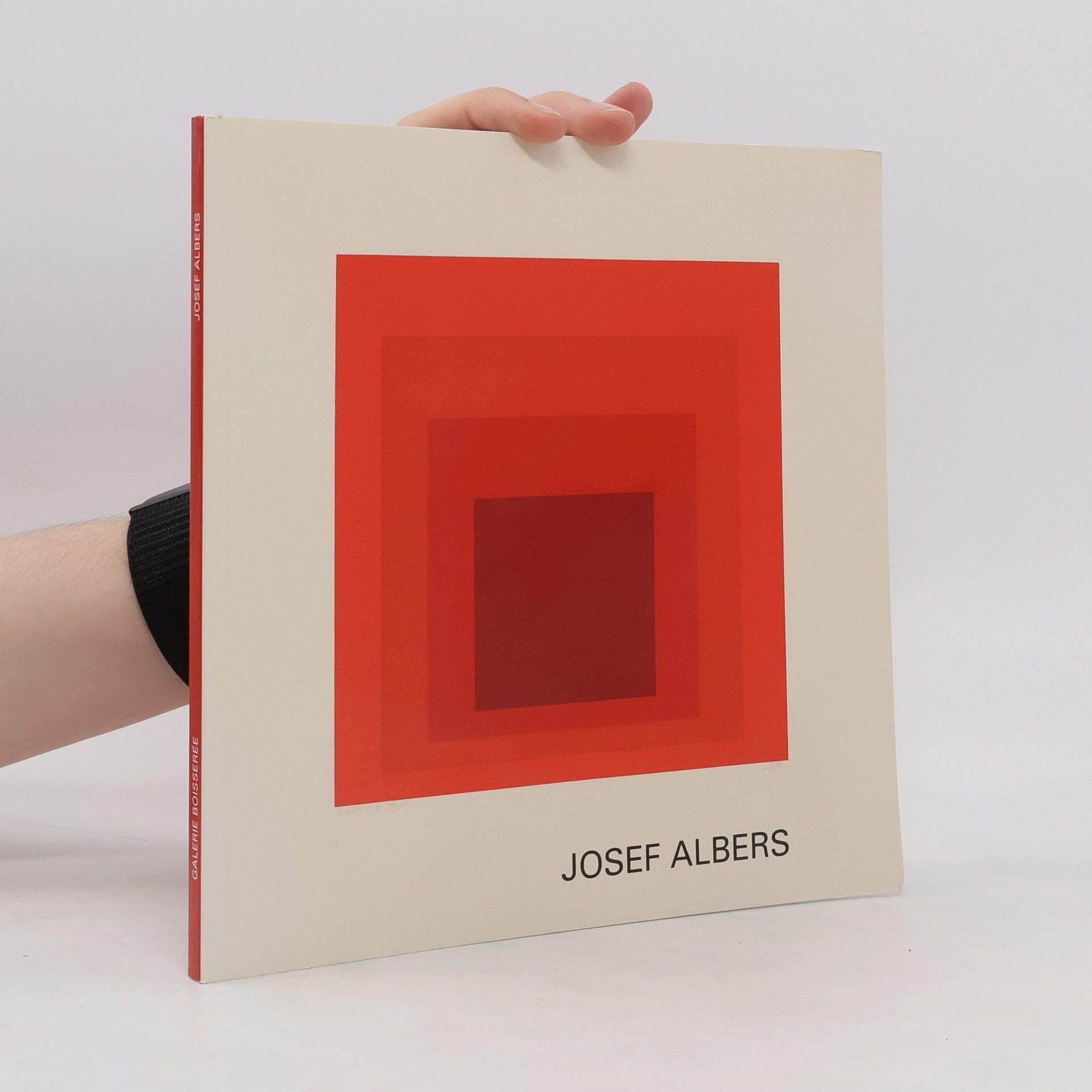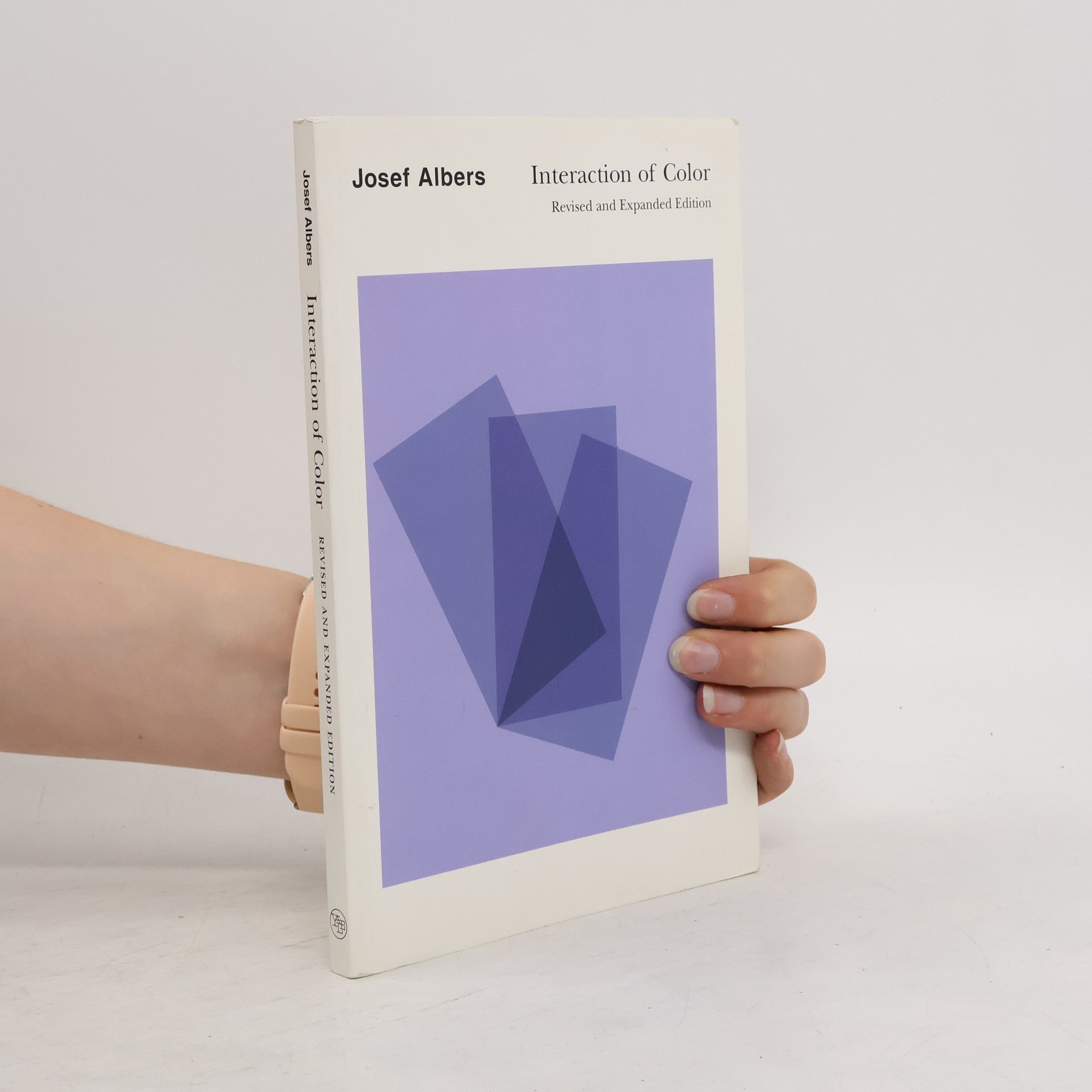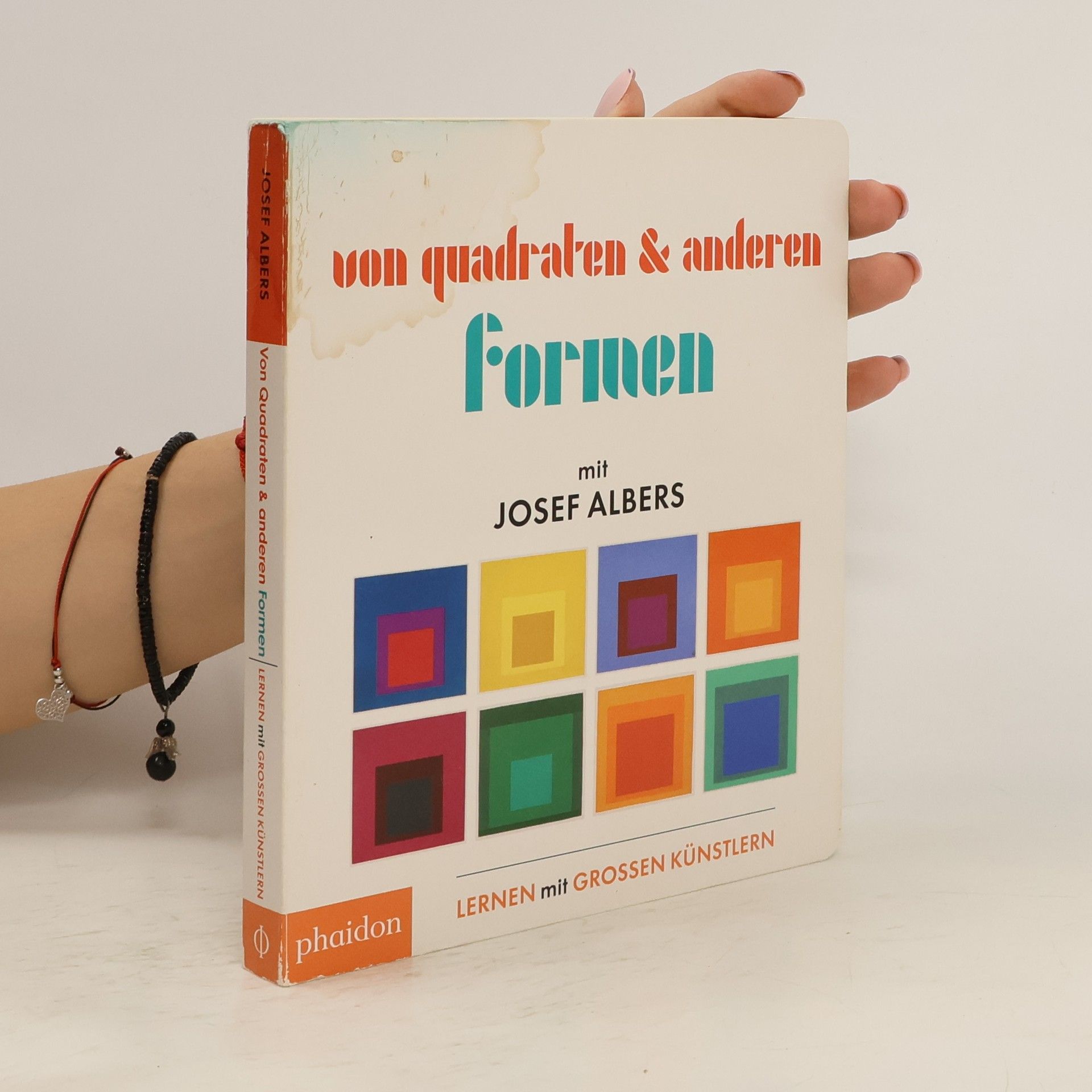Josef Albers Book order
Josef Albers was a German-born American artist and educator whose work, both in Europe and the United States, formed the basis of modern art education programs of the twentieth century. His innovative approach to teaching and theoretical work influenced generations of artists and designers. Albers's emphasis on the perception of color and form through his renowned series and pedagogical methods continues to resonate in contemporary art. His legacy lies in the systematic exploration of visual relationships and their impact on human perception.
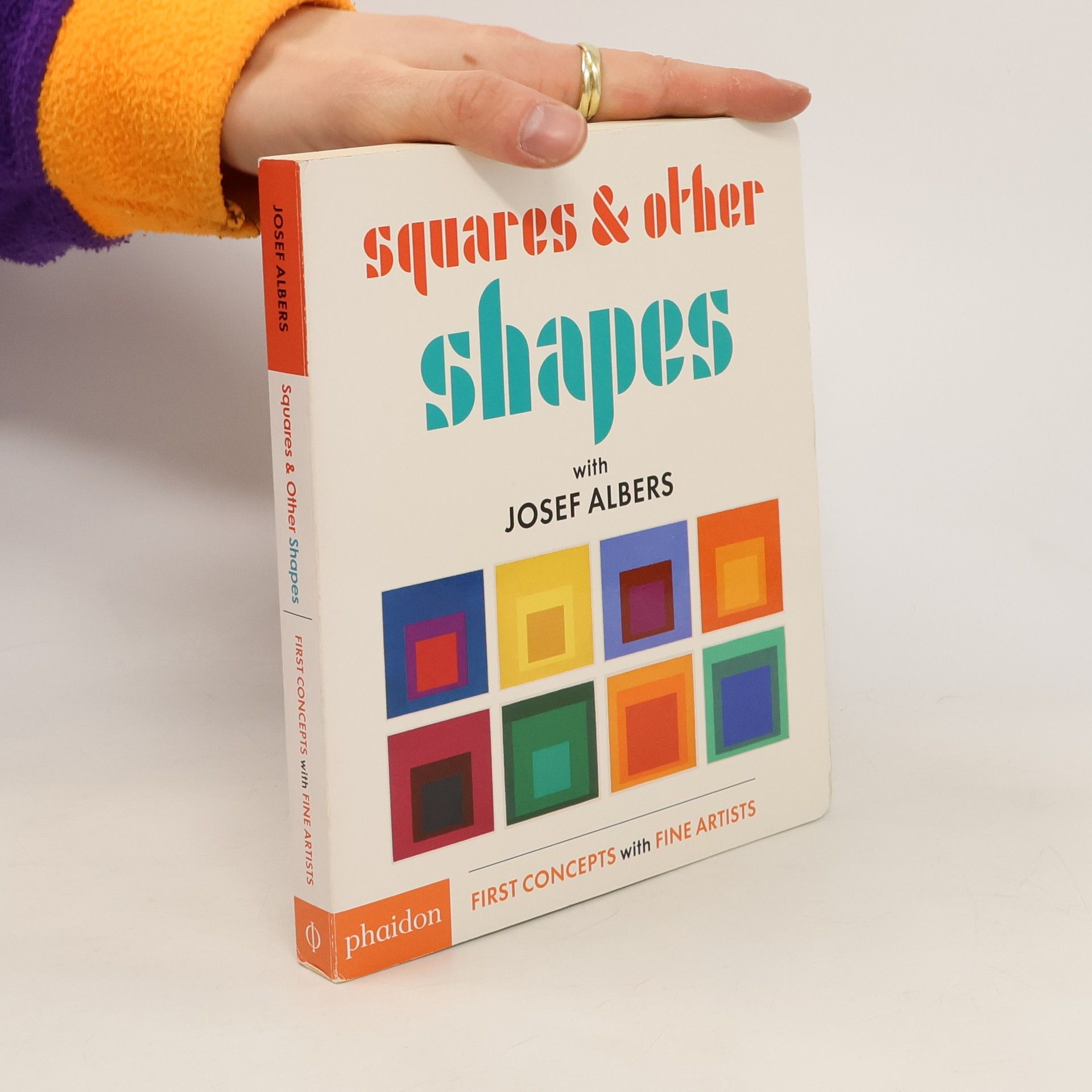

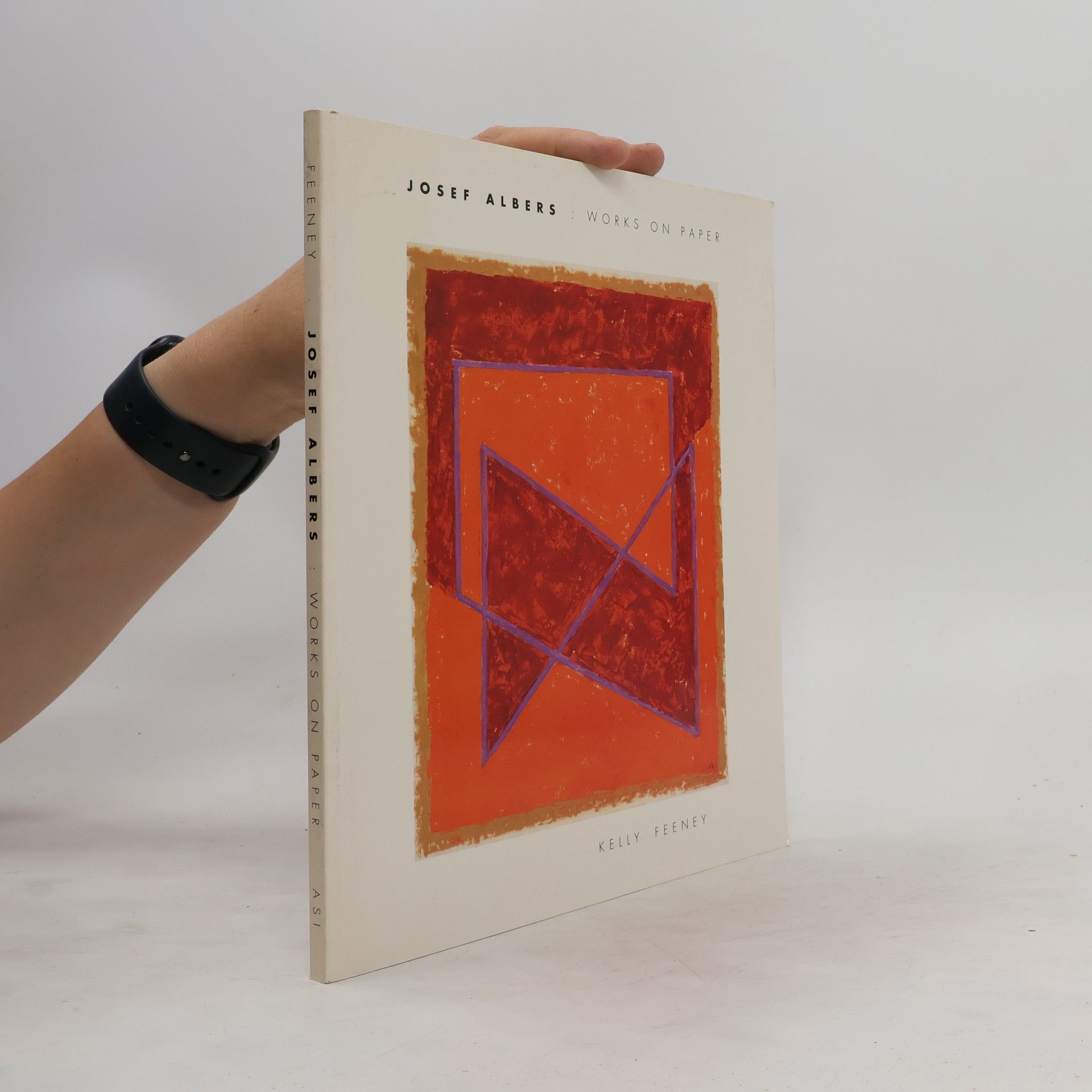
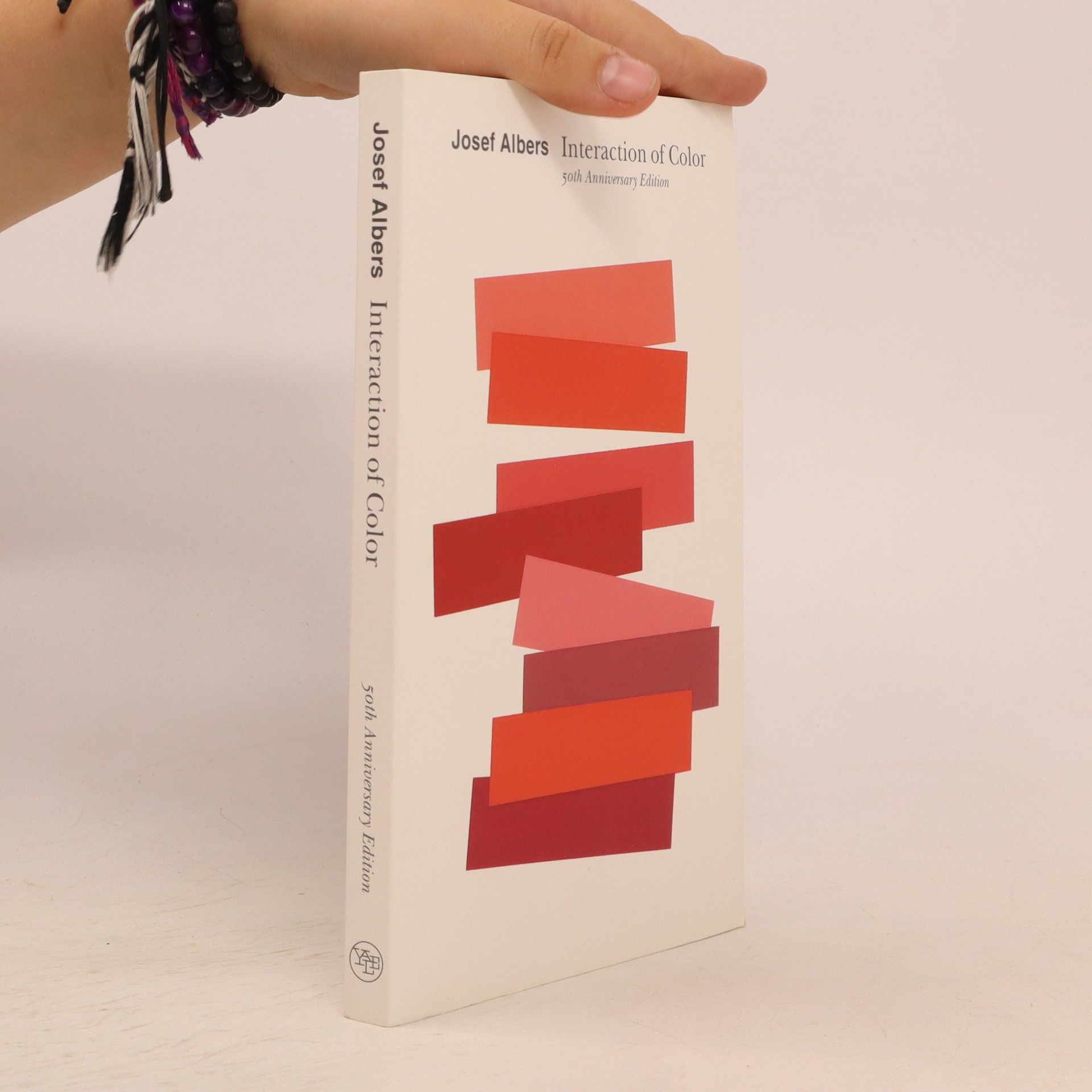


- 2025
- 2021
Die Untersuchung von Fläche und Raum sowie Farbe, Raum und Fläche bildeten ein 0Leben lang die Energiequelle für Albers' Schaffen, also die Physiologie und Psycholo-0gie der Wahrnehmung. 0Wenn die Betrachtung bei diesem Befund stehenbleibt, entgeht ihr allerdings das, 0was jenseits dieser Interpretation denkbar ist. Einen überraschenden Hinweis lieferte 0Albers selbst, als er auf die Bedeutung des Werks von Piero della Francesca für ihn 0hinwies. Hier sah er eine Einheit aus Stille und Bewegung, die zum Vorbild werden 0konnte. Jeder, der einmal die Fresken Pieros in Arezzo oder eines seiner Tafelbilder gesehen hat, sei es in London, Mailand oder Florenz, wird nachvollziehen können, was Albers so beeindruckt hat: Die Statuarik, gepaart mit der subtilen Bewegung innerhalb der Farbgebung. Indem er diesen Zustand modifizierte und modernisierte, gelangte er gerade nicht zu der meditativen Ausstrahlung, die zum Beispiel für Werke von Mark Rothko typisch sind, sondern zu einer diesseitigen Farbgebung, die sich allerdings weiten kann zu einer Raumsuggestion, die Kosmisches zu evozieren durchaus fähig ist. 0Selbst monochrome Serien bleiben in ihrer schwebenden Wirkung ein unmittelbares 0sinnliches Erlebnis, das nur in Ausnahmefällen einen transzendierenden Hang zulässt. 0Albers arbeitete stattdessen immer mit klar definierten geometrischen Formen mit 0dem Ziel einer uneindeutigen Eindeutigkeit. - from the Foreword by Siegfried Gohr. 00Exhibition: Galerie Boisserée, Köln, Germany (24.04. - 12.06.2021)
- 2021
Josef Albers’s Interaction of Color is a masterwork in twentieth-century art education. Conceived as a handbook and teaching aid for artists, instructors, and students, this timeless book presents Albers’s unique ideas of color experimentation in a way that is valuable to specialists as well as to a larger audience.Originally published by Yale University Press in 1963 as a limited silkscreen edition with 150 color plates, Interaction of Color first appeared in paperback in 1971, featuring ten representative color studies chosen by Albers. The paperback has remained in print ever since and is one of the most influential resources on color for countless readers.This new paperback edition presents a significantly expanded selection of more than thirty color studies alongside Albers’s original unabridged text, demonstrating such principles as color relativity, intensity, and temperature; vibrating and vanishing boundaries; and the illusions of transparency and reversed grounds. Now available in a larger format and with enhanced production values, this expanded edition celebrates the unique authority of Albers’s contribution to color theory and brings the artist’s iconic study to an eager new generation of readers.
- 2021
Albers and Morandi: Never Finished
- 144 pages
- 6 hours of reading
Rarely seen together, the artwork of Josef Albers (1888?1976) and Giorgio Morandi (1890?1964) shares many similarities. Although they never met, both artists worked in series as they explored difference and potential through their distinctive treatment of color, shape, form, and morphology. They were also both influenced by Cezanne. As master illusionists and experts in proportion, they tackle similar conceits from different perspectives. Albers focused on the effects of subtle or bold changes and interactions in color, while Morandi made still lifes that treat simple objects as a cast of characters on a stage, exploring their relationship in space.00Published on the occasion of the critically acclaimed exhibition 'Albers and Morandi: Never Finished', the book illuminates the visual conversation between these two artists. With the exhibition hailed by The New Yorker?s Peter Schjeldahl as ?one of the best ? I?ve ever seen,? this publication brings this unusual, thought-provoking pairing to your home. Gorgeous reproductions are accompanied by a roundtable about form and color between the exhibition?s curator, David Leiber; Heinz Liesbrock, the director of the Josef Albers Museum Quadrat Bottrop, Germany; and Nicholas Fox Weber, the director of Josef and Anni Albers Foundation, as well as an essay by the Morandi expert and founder of the Center for Italian Modern Art, Laura Mattioli.00Exhibition: David Zwirner Gallery, New York, USA (07.01.-27.03.2021)
- 2019
Josef Albers, Anfang der 1920er-Jahre Schüler und Lehrer am Bauhaus, später Professor an amerikanischen Kunstschulen, ist berühmt für seine quadratischen Bilder. Nun tritt sein Frühwerk aus der Zeit von 1911 bis um 1920 ins Zentrum der Betrachtung. Sein Aufbruch in die Moderne, seine persönliche und künstlerische Entwicklung werden im Kontext seiner Zeit beleuchtet. Wie wurde Josef Albers aus Bottrop zum Vorreiter der Moderne? Albers’ künstlerische Entwicklung führte ihn vom Ruhrpott ins Münsterland, ins Rheinland und an die Akademien in Berlin und München. Angeregt von geistigen Strömungen und künstlerischen Bewegungen trieb Albers seine Ausbildung als Kunstlehrer und Künstler voran. Sein frühes Schaffen umfasst Farbmalereien, vor allem Stillleben, außerdem eine größere Anzahl Selbstporträts, Natur- und Stadtlandschaften, Zeichnungen und Druckgrafiken sowie Glasarbeiten aus den ersten Jahren am Bauhaus ab 1920. Auch Künstler, die Albers’ Werdegang flankierten, werden vorgestellt, darunter Philipp Franck, Johan Thorn Prikker, Franz von Stuck. Nachhaltig geprägt hat ihn zudem die Folkwang-Idee von Karl Ernst Osthaus.
- 2018
Josef Albers Quicknotes
- 20 pages
- 1 hour of reading
Josef Alber's Homage to the Square series paintings are bright and universal. His classic Bauhaus style artwork is reproduced here for our museum quality notecard collection.
- 2017
Gegenstandslose Werke aus drei verschiedenen Generationen stellt "Cutting Edge" gegenüber. Was die Bilder der Künstler Imi Knoebel, Winfried Gaul und Josef Albers dabei eint, ist etwa die Konzentration auf die Farbe und auf geometrische Muster. 00Exhibition: Galerie Ludorff, Düsseldorf, Germany (09.09.2017-27.01.2018).
- 2016
Squares & Other Shapes
- 30 pages
- 2 hours of reading
An introduction to shapes through the acclaimed art of Josef Albers The influential art of Josef Albers is used to teach shapes in this stylish read-aloud board book, which takes children through Albers' range of geometrics, one artwork per page, beginning with squares and returning to them as a familiar refrain throughout. The variance of colour, scale, and quantity adds to the richness of the visual arc, and the accompanying text provides a humorous and engaging commentary. Readers will not only learn their shapes, but also grow familiar with fine art in this second title in the 'First Concepts with Fine Artists' series. Includes a read-aloud `about the artist? at the end.
- 2013
Interaction of color : 50th anniversary edition
- 193 pages
- 7 hours of reading
An experimental approach to the study and teaching of color is comprised of exercises in seeing color action and feeling color relatedness before arriving at color theory.
